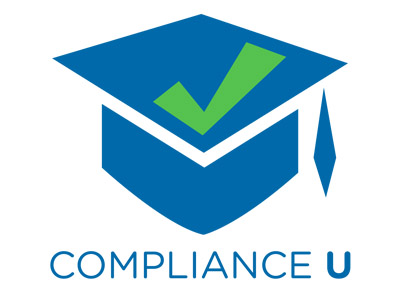 |
Team Participation: Consensus |
0.75 |
This course will focus on how to identify the prerequisites for and steps of the consensus process and identify and overcome challenges to the consensus process. |
 |
Team Participation: Making a Decision |
0.50 |
This course will focus on how to identify the need for collective decision-making and the rules to be followed while making decisions, identify the requirements for and elements of team decision-making, and identify and use various decision-making methods. |
 |
Team Participation: Nonverbal Communication and Active Listening |
0.75 |
This course will focus on how to identify types of nonverbal cues and how they mesh with verbal messages, identify the characteristics of active listening and become an active listener, and respond to input in a productive manner. |
 |
Team Participation: Resolving and Handling Conflict |
0.75 |
This course will focus on how to resolve conflict within a team or between yourself and others, achieve positive results through how you handle conflict, and identify and understand conflict resolution styles. |
 |
Team Participation: Understanding Team Fundamentals |
1.25 |
This course will focus on how to organize a team, identify its characteristics, and differentiate between traditional and self-directed work teams; to understand the roles and responsibilities of a team member and the stages of team building; understand team goals, give feedback, and anticipate team problems; and communicate effectively with different types of personalities and resolve conflicts. |
 |
Technical Rescue—EMS Considerations: Part 1 |
1.00 |
Paramedic, and longtime EMS educator, Aaron Horowitz sits down with medical director, Jeremy Cushman. The thought-provoking discussion that ensues covers a wide range of technical rescues. We believe that much can be done to treat the sick and injured patient during a technical rescue of any type if you prepare for the incident. Many of these concepts you will want to discuss with fellow responders if you have not done so already.
Final Exam: This multiple choice exam is designed to test your knowledge of the material you just reviewed. You have two attempts to gain an 80% or higher on this exam. Please take your time and answer each question carefully. |
 |
Technology Coaching in Education |
0.75 |
Technology has become an integral part of education. This course covers the responsibilities, benefits, and challenges associated with technology coaching in education. It is designed to help teachers effectively integrate technology into the classroom to improve teaching outcomes. It is just one of the many K-12 education courses we offer. |
 |
The 3Ds: Depression, Dementia, and Delirium |
0.50 |
In this course you will learn about the effects of aging with depression, dementia, or delirium, as well as how to prevent, diagnose, and treat these disabilities.
|
 |
The Basics of Operant Conditioning |
1.00 |
Everyone knows that you can fix most problems with a hammer, screwdriver and a pair of pliers. In this class, we will develop an operant conditioning tool box and begin to fill it with some basic tools. Attendees will learn about several key operant conditioning tools and how to use them to solve routine problems in animal management. In addition, class participants will explore a few of the key early researchers and their work in operant conditioning that lead to the development of a technology that we now use to enhance the care of our animals and our safety. Attendees will review the questions to ask prior to beginning any behavior management program. We will explore the conditioning of three common behaviors that are helpful in animal management. |
 |
The Dignity for All Students Act (DASA) (Short) |
0.25 |
This course covers the Dignity For All Students Act and will help you understand how DASA is implemented within schools. |
 |
The Dignity for All Students Act (DASA) for Administrators |
1.50 |
Welcome to The Dignity for All Students Act (DASA) course. This course is designed for anyone who works in a school. It is just one of the many K-12 courses we offer. This course will help you develop new knowledge about students and will help you understand how DASA is implemented within schools. |
 |
The Ethics of Animal Care |
2.00 |
Our industry is one that is at the forefront of the on-going ethical dialogue regarding animals, their uses, welfare and conservation. This course is designed to help animal care workers and others to better understand the role of ethics in their daily professional activity. The class explores the origins and evolving process for ethics associated with human-animal interactions, as well as, a range of current ethical issues and challenges faced by animal care professionals. |
 |
The Fundamentals of Animal Learning Webinar |
1.00 |
Animals, whether you are working with your pet at home or a 300 pound lion, are constantly learning about their environment. Animal care workers and animal trainers can use this behavioral knowledge to their advantage in animal management.
Discover the importance of detailed observation of animal behaviors. Understanding reflexes and situations where reflexive behaviors are likely to occur will enable animal keepers to work safely in a potentially dangerous environment.
Students will also discover a technology to reduce the stresses associated with daily animal management, improving animal welfare
|
 |
The Globally Harmonized System (GHS) for Hazard Classification and Labeling |
0.25 |
This course covers the Globally Harmonized System for Hazard Classification and Labelling. The Globally Harmonized System for Hazard Classification and Labelling, or GHS, is a common and coherent approach to defining and classifying hazards and communicating information on labels and safety data sheets. GHS provides the underlying infrastructure for the establishment of national, comprehensive chemical safety programs. |
 |
The Importance of Sensory-Rich Play (CDA 2) |
2.00 |
This course explores the research-backed benefits of this exciting form of play, from fostering essential developmental skills to sparking joy and curiosity. However, navigating regulations and concerns in early care settings can be tricky. Dive into practical strategies to empower young children in making choices and assessing risks amidst sensory-rich, highly physical activities, nurturing confident explorers with a deep love for learning. |
 |
The Importance of Stimulating and Focused Interaction (CDA 8) |
2.00 |
This course empowers early care and education (ECE) professionals to nurture young minds and hearts through meaningful connections. Explore the profound impact interactions have on children's learning, development, and relationships with teachers and peers. Discover research-backed strategies to cultivate stimulating, focused interactions from infancy onwards, setting the stage for positive outcomes and a lifelong love of learning. |
 |
The Indian Child Welfare Act |
1.00 |
The purpose of the Indian Child Welfare Act (ICWA) is to protect the rights of Native American communities and prevent Native American children from being unjustifiably removed from their families. This course will give you a general knowledge of how ICWA contributes to the preservation of Native American culture. |
 |
The Latest and Greatest in Employee Benefits |
1.00 |
During this highly informative webinar, you will learn of the innovative ways San Diego Zoo Global was able to maintain benefit costs, help employees to better understand and appreciate their benefits and save time enrolling in their benefits, and other current trends in the complex world of employee benefits. |
 |
The Neuropsychology of Trauma and How It Impacts Learning |
1.00 |
Understanding the root of trauma and how we can cultivate a well- functioning classroom is an essential task for educators. How do VUCA (volatility/uncertainty/complexity/ambiguity) impact child and adolescent development? How do ACEs (adverse childhood experiences) impact child and adolescent development? How do SCARF needs (status/certainty/autonomy/relatedness/fairness) impact child and adolescent development? This workshop gives participants insight into the workings of the sympathetic (fight or flight) and parasympathetic nervous system (rest and digest) and their impact on learning. |
 |
The Nitrogen Cycle and Biofiltration |
1.00 |
In this webinar we will discuss one of the most common causes for the death of fish i.e. ammonia toxicity and to a lesser extent nitrite toxicity. Understanding the nitrogen cycle is essential for any type of fish keeping.
We will look at the steps in the conversion of ammonia to nitrite and then to nitrate as well as the toxicity of the various stages in the cycle. Biofiltration is one of the most critical components of any closed system. What is a biofilter and how to establish and successfully maintain one will be discussed. An examination of the process of denitrification will complete the webinar. |
 |
The NoFEAR Act |
0.50 |
This course covers the Notification and Federal Employee Antidiscrimination and Retaliation Act, also known as the NoFear Act. This course will discuss the background and basics of the act and other antidiscrimination laws that will protect you in the workplace. This course will also discuss what you should do if you believe you have been discriminated against, and the steps you can take. |
 |
The NoFEAR Act (Corrections) |
0.25 |
This course will inform participants of the Notification and Federal Employee Antidiscrimination and Retaliation Act, also known as the NoFEAR Act. At the conclusion of this course, participants should understand the basic provisions of the NoFEAR Act, know what Antidiscrimination and Whistleblower Protection Laws protect them, and understand how to file a complaint alleging discrimination, retaliation, or a violation of the Whistleblower Protection Laws. |
 |
The Purpose for Ethical Commitment (CDA 6) |
2.00 |
This course explores the NAEYC Code of Ethical Conduct, equipping you to uphold your responsibilities and moral obligations towards children, families, colleagues, and the wider community. Discover how this essential framework guides your interactions and decisions, fostering a foundation of trust, respect, and professionalism in your work. |
 |
The Relevance of the Child-Caregiver Attachment (CDA 7) |
2.00 |
Numerous attachment theorists identify the importance of children’s early, secure attachment bonds. Children’s relationships with their significant caregivers are the primary means for fostering healthy social and emotional development. This course introduces research and information focused on the attachment relationship, with special emphasis on observing and documenting teacher-child relationship quality to support positive outcomes for children. This course is designed to be part of a Child Development Associate (CDA) Credential™ curriculum, and covers CDA subject area 7: Observation and Assessment. It can also be taken as a stand-alone learning event or as part of a broader early childhood education curriculum.
|
 |
The Role of Staff in Behavior Guidance: Elementary Students |
2.00 |
Guiding and managing the behavior of children and youth are some of the biggest challenges that out-of-school time program staff face. Staff needs to be actively engaged in supporting children and youth in:
1. Building inner self-control.
2. Making and fostering friendships with children and youth from all backgrounds.
3. Making responsible, age-appropriate choices.
4. Understanding natural and logical consequences for behaviors.
5. Taking responsibility for behaviors.
By the end of this course, you will be able to:
- Understand your reactions to the behaviors of children and youth, and learn to use this information to respond more effectively.
- Learn to use behavior guidance strategies at the appropriate time. |


























